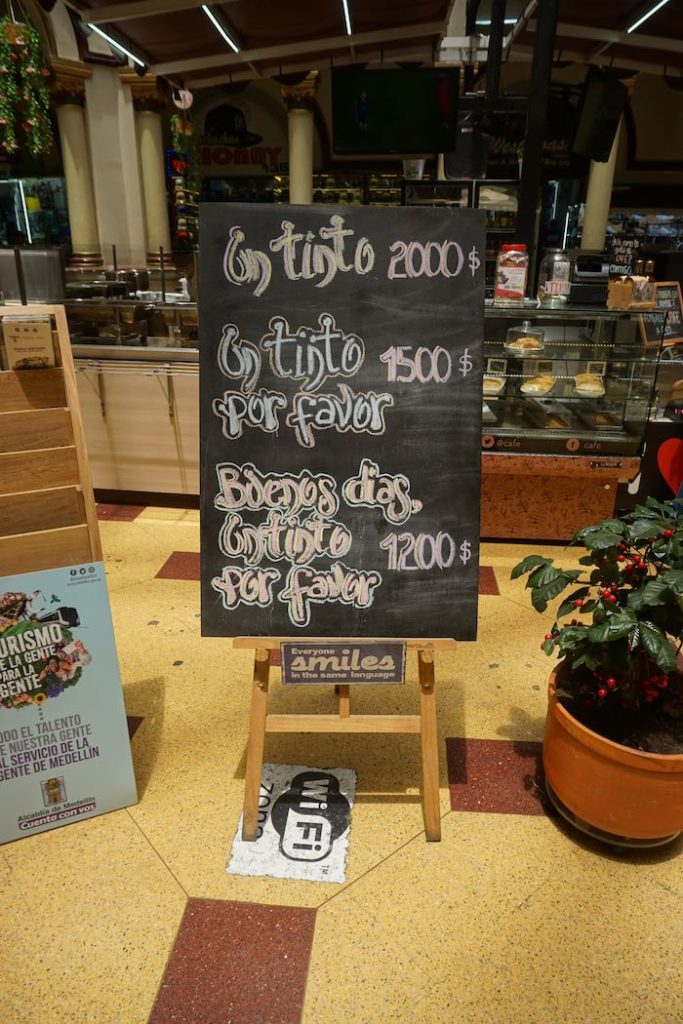How to Order a Coffee in Spanish Posted by sasha on Feb 24, 2021 in Spanish Culture
Me gusta mucho tomar café. Tomo café todos los días. ¿Y usted? (I really like drinking coffee. I have coffee every day. How about you?). If you’re a big coffee drinker and a Spanish learner, I think you’ll enjoy this post on how to order a coffee in Spanish. From Mexico all the way down to Chile, I’ve been drinking coffee everywhere I go in Latin America to research this post for you!
Coffee Vocabulary in Spanish
Ordering a coffee in Spanish is pretty easy, but you’ve got lots of options. First, we’ll get started with a list of useful vocabulary:
- el café = coffee/cafe/coffee shop
- café molido = ground coffee
- granos de café = coffee beans
- tomar un café = have a coffee
- la taza = cup/mug
- la leche = milk
- la espuma = foam
- el azúcar = sugar
- la miel = honey
- el endulzante = sweetener
- la canela = cinnamon
- caliente = hot
- frío = cold
- café solo = espresso
- doble = double
- café con leche = coffee with milk
- cortado = espresso with steamed milk
- café americano = American coffee (filtered)
- café irlandés = Irish Coffee
- descafeinado = decaffeinated
- para aquí = for here
- para llevar = to go
You probably noticed that the Spanish word for coffee and cafe/coffee shop is the same. How do you think you would ask someone, “Do you want to have a coffee in the cafe?” If you guessed “¿Quieres tomar un café en el café?” then you’re right!
Different Country, Different Name
As you might expect, different Spanish-speaking countries have their own unique vocabulary when it comes to coffee. For example, I don’t usually hear or use the word café solo in Latin America, but apparently that’s a common way to order espresso in Spain.
In Colombia, most people just usually order un tinto, which is just a long, black coffee. I’ll never forget doing the Real City free walking tour of Medellín and learning the correct way to order un tinto from a local coffee stall:
Meanwhile in Mexico, there’s café de olla. It’s prepared in an earthen clay pot and sweetened with cinnamon and piloncillo (unrefined cane sugar). If you weren’t confused enough, that same sugar also goes by the names panela, chancaca, or raspadura depending on which country you’re in.
On the other side of the pond, it seems like café bombón is a popular choice in Spain. A specialty of Valencia, it’s espresso mixed with sweetened condensed milk. I’ve never been to Spain but that reminds me of the coffee in Vietnam.
How to Order a Coffee
The simplest and most efficient way to order a coffee (regardless of which Spanish-speaking country you’re in) is by saying “Un café, por favor” (A coffee, please). That’s easy enough, but what do you do if your barista or waiter asks “¿Cómo lo quiere?” (How would you like it?). You thought you had your order placed and now you have to come up with some more Spanish on the spot…
That’s why it’s always better to be a bit more specific. Whenever I order a coffee, I usually just say “Para mí, un café americano caliente, por favor” (For me, a hot American coffee, please).
Unless you specify, they’ll typically ask you “¿Con leche?” (With milk?). These days, you’ve got lots of options for adding milk to your coffee:
- leche entera = whole milk
- leche semidesnatada = reduced fat milk
- leche desnatada = skim milk
- leche de almendra = almond milk
- leche de soya = soy milk
Personally, I’m a big fan of leche de almendra y miel de agave (almond milk and agave honey). ¡Es una combinación deliciosa! (It’s a delicious combination!).
You can always just ask for un poco (a little) of something, such as “un poco de leche” (a little milk). If there’s anything you don’t want, you can just say “Sin…” (Without…), such as “Sin azúcar, por favor” (Without sugar, please).
If you’re looking for something specific, you can always ask “¿Tienes…?” (Do you have…?), for example “¿Tienes panela?” (Do you have cane sugar?) or “¿Tienes leche de soya?” (Do you have soy milk?).
In many little coffee shops, you’ll also be asked “¿Para aquí o para llevar?” (For here or to go?). I typically respond with “Para aquí, por favor” (For here, please) because I love sipping my coffee in a local shop instead of carrying a hot cup of it out on the street! Which brings me to my final point…
Cafe Culture
Wherever you go in the Spanish-speaking world, cafe culture is a big thing. I’ve been to some amazing cafes over the last few years of living and traveling in Latin America. After all, there’s some pretty amazing coffee grown here!
Whether you’re in Guatemala, Peru, or Argentina, I recommend dropping into a cafe, ordering up your favorite cup, and enjoying the atmosphere. You’ll get a chance to practice your Spanish, do a bit of people watching, and of course get a nice caffeine buzz!
I’d like to end this post by asking you a question…
¿Cuál es tu café favorito?
What’s your favorite coffee?

Build vocabulary, practice pronunciation, and more with Transparent Language Online. Available anytime, anywhere, on any device.






